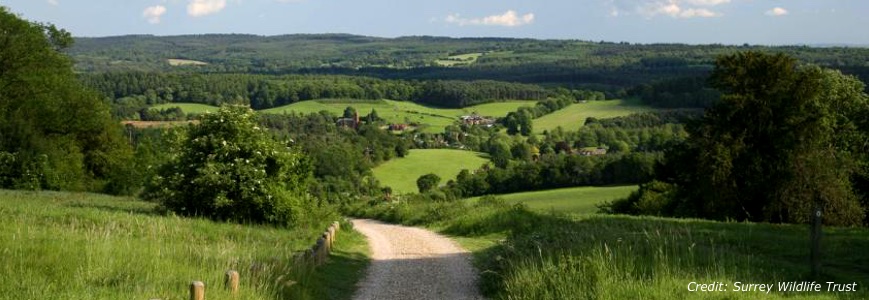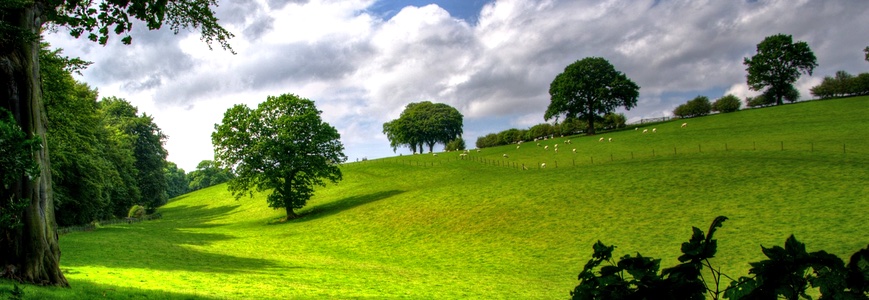THE LANDSCAPING SOLUTIONS BLOG
Welcome to our Blog. Inspiration, updates and industry trends from the team at Landscaping Solutions.
THE SURREY WILDLIFE TRUST

We’ve covered a number of environmental issues on the Landscaping Solutions blog over recent months. As a subject matter close to our hearts we try to offer practical support wherever possible.
For instance, we have been corporate sponsors of the Surrey Wildlife Trust for several years now and have just renewed our support for 2018.
Formed in 1959 the trust manages 82 sites in total, covering almost 8000ha. They are the only organisation in Surrey that cares for all forms of wildlife and they are doing some incredible work.
On a daily basis the trust works closely with schools, communities and volunteers across Surrey, informing and involving people actively in nature. Over 15,000 children and young people now benefit annually from a wide variety of outdoor learning courses and activities thanks to the work Surrey Wildlife Trust carries out.
Surrey is host to some wonderful habitats and the Wildlife Trusts works closely with partners and landowners to advise on land management for conservation, with particular emphasis on woodland, wetlands and heathland. In addition, the trust also regularly runs campaigns in an effort to save precious habitats and vulnerable species.
Unfortunately in the current political climate of government cuts and lack of funding, many of the habitats and species in question are coming under constant pressure from a variety of threats.
This lack of funding can make the difference between a species thriving or becoming locally extinct (one recent example would be the Pearl Bordered Fritillary butterfly which is now extinct in Surrey due to woods becoming overgrown) and for that reason it is more crucial then ever that we support these bodies in the work they do.
Landscaping Solutions company director Ben West has been a member of the Wildlife Trusts since he was a young boy. Initially a member of the Staffordshire Wildlife Trust Ben quickly became a member of the Surrey Wildlife Trust when he moved to the area around 15 years ago.
“Through the years I started to develop a growing awareness of the threats to our native wildlife and landscapes through habitat destruction, pollution and poor land management. I understood the crucial part the wildlife trusts play and started to volunteer with them and other bodies to help manage their reserves”.
A great deal of the work carried out by the Wildlife Trusts and trusts like them is volunteer led and it’s this ongoing support that allows them to continue their vital work.
Along with the Wildlife Trusts Landscaping Solutions also support the RSPB, Butterfly Conservation, Wessex Chalk Streams and Rivers Trust, Bumblebee Conservation and the Denmark Farm Conservation Centre.
Whether its corporate sponsorship, personal membership or looking after the wildlife on your patch, by supporting conservation bodies, together we can make a difference!
Further information regarding the Surrey Wildlife Trust and their work can be found at surreywildlifetrust.org
GOVERNMENT’S TREE PLANTING FUND ANNOUNCED

The Woodland Creation Grant, a £13 million tree planting fund, was announced by the Government last week in an attempt to significantly increase planting rates.
According to recent figures from the Forestry Commission only 582 hectares of trees were planted last year, resulting in the lowest numbers planted since records began in 1976.
Unfortunately the trend has continued well into 2017 as well, with only 63,000 trees planted between January and March of this year.
The new funds have been made available through the Woodland Creation Grant, part of the Countryside Stewardship scheme which is a Government initiative set up to tackle these alarming statistics and provide financial incentives to local authorities, farmers and land owners throughout England.
As part of this scheme the grants are intended to help successful applicants plant more than 3 million trees, creating an estimated 1,900 hectares of new woodland. This goes some of the way towards reaching the Government’s primary objective of planting 11 million trees overall in rural areas and a further one million trees in our towns and cities.
There is, however, still a long way to go if the Government are to reach that quota by their original deadline of 2020.
Once application forms for the Woodland Creation Grant become available in September, those eligible will be able to apply for up to £6,800 per hectare for tree planting, with final submissions due in January 2018.
Forestry Minister Thérèse Coffey said: "Today’s announcement demonstrates the government’s ongoing commitment to the forestry sector and to biodiversity, which afforestation delivers. I hope to see as many applications as possible so this important industry can continue to thrive."
We often cover environmental issues here on the Landscaping Solutions blog as it’s a subject matter close to our hearts. Statistics like last years Forestry Commission figures really strike a chord with us and overall we feel the Woodland Creation Grant is a positive move in the right direction.
For the scheme to prove successful the environmental impact needs to be at the heart of how the planting is implemented. The additional woodland will no doubt give the timber industry a much needed boost but woodland creation is not always environmentally sound.
There is no denying that countless studies have shown trees reduce pollution, regulate temperatures, mitigate flood risk and provide a habitat for wildlife to thrive. However, For woodland creation to prove successful in the long term a number of factors have to be carefully considered. For example, what kind of woodland is being created, where is it being created and why is it being created?
To meet the increasing demand of timber for the construction industry, millions of pine trees have been planted over the past 100 years in our uplands. With little consideration for the surrounding wildlife, biodiversity has in fact been drastically reduced in these areas. In short it’s simply not a matter of just planting lots of trees and hoping for the best.
Further information regarding the Woodland Creation Grant and the Countryside Stewardship scheme can be found on the Government website.